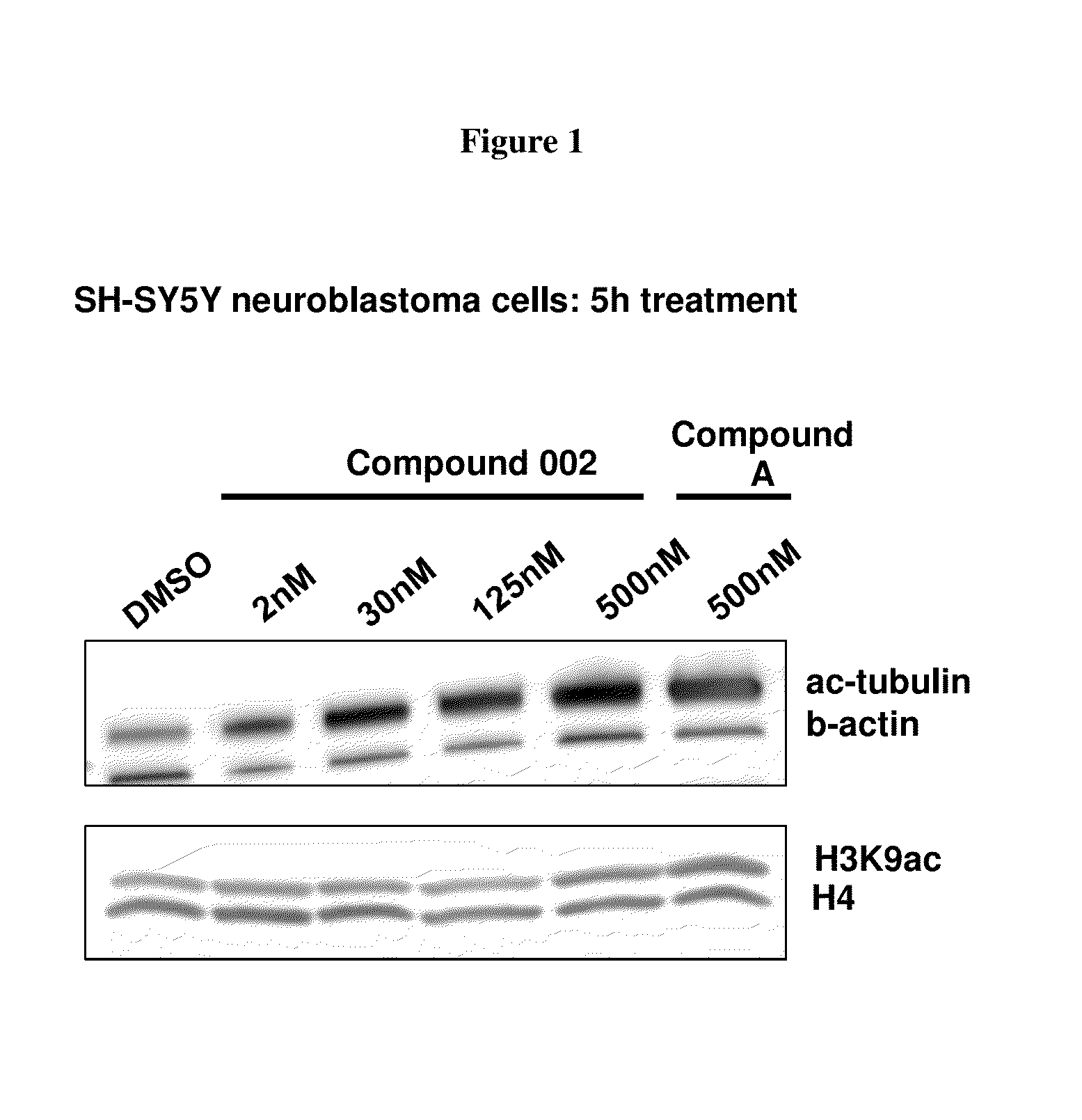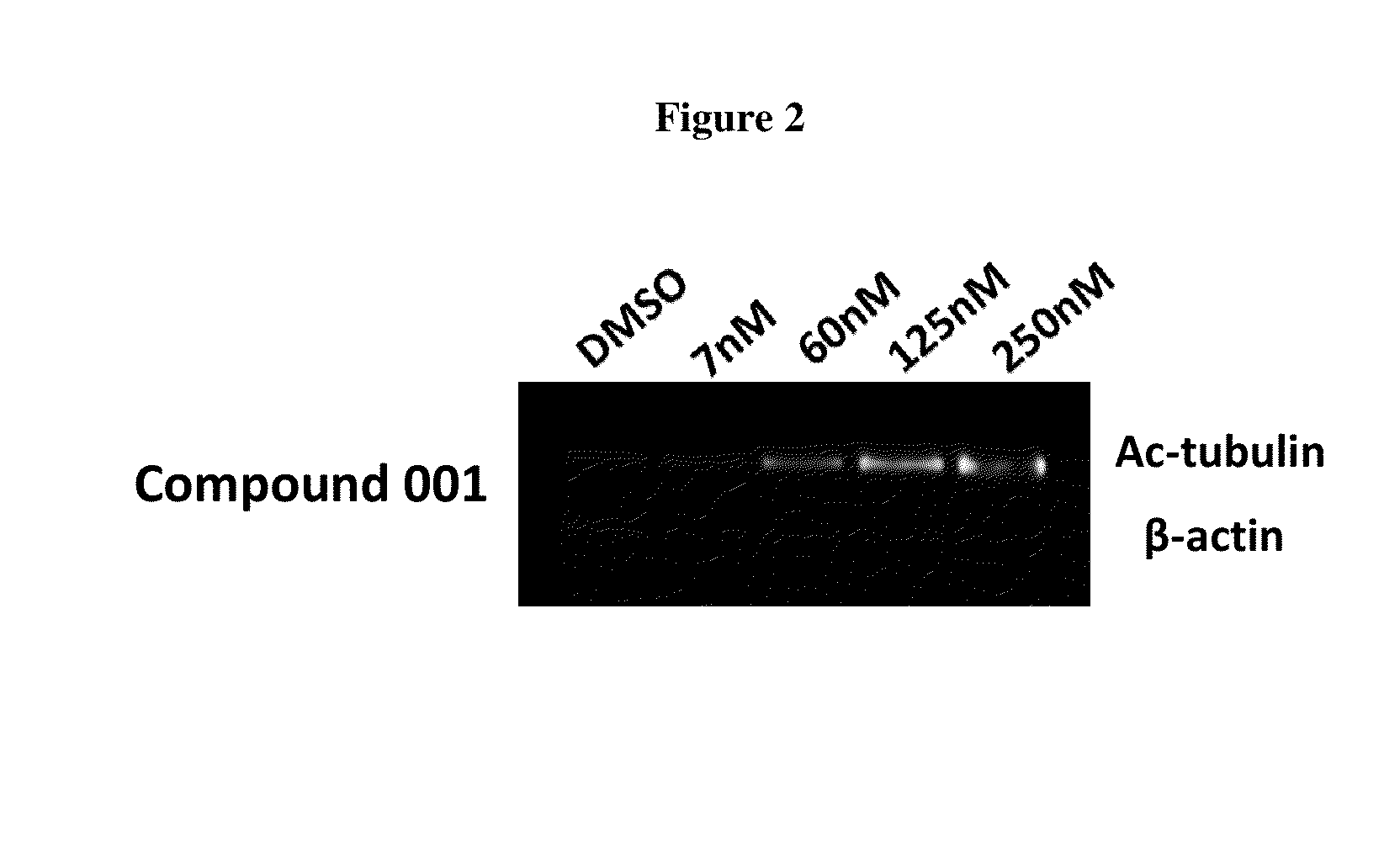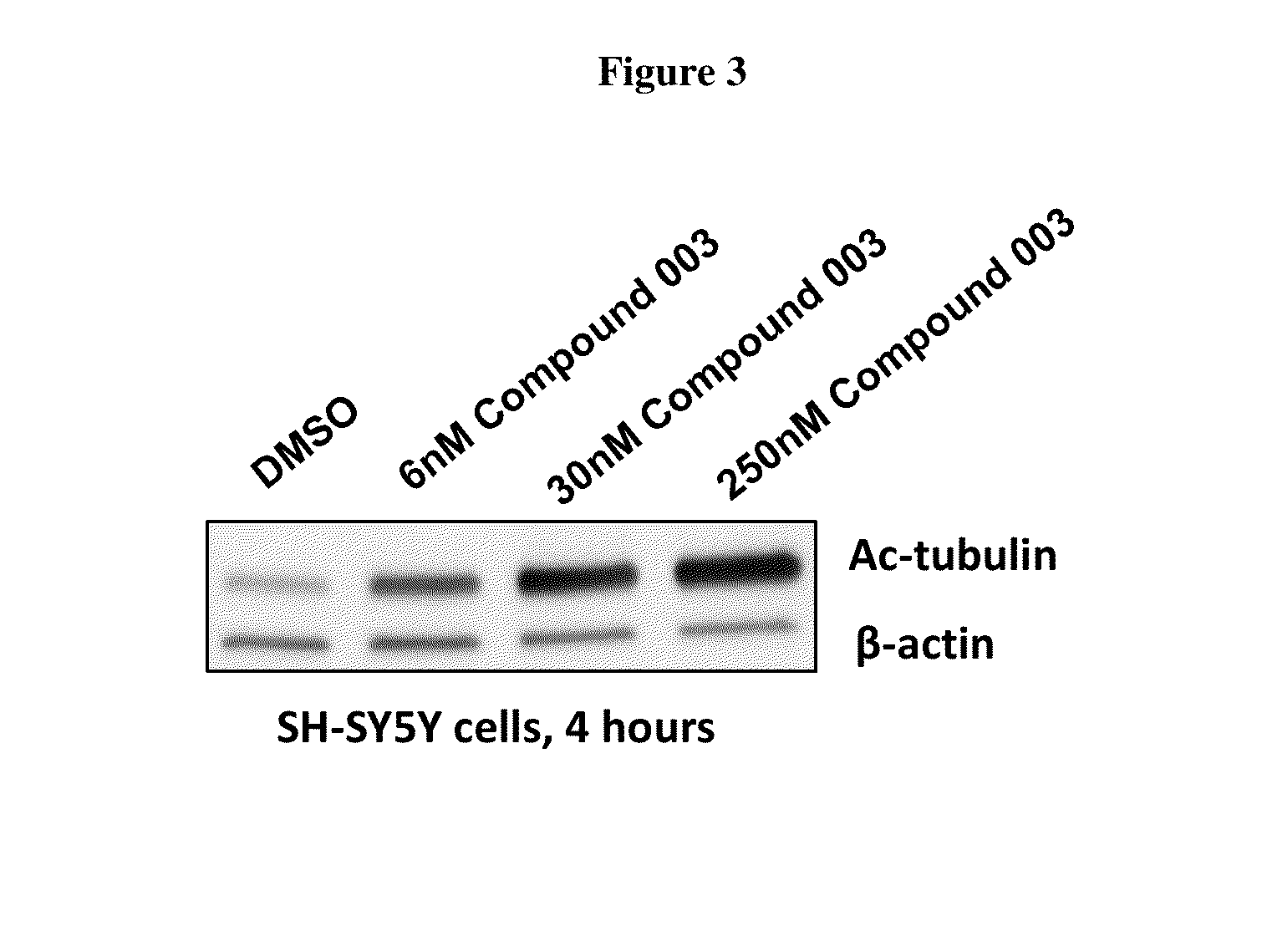Pyrimidine hydroxy amide compounds as HDAC6 selective inhibitors
- Summary
- Abstract
- Description
- Claims
- Application Information
AI Technical Summary
Benefits of technology
Problems solved by technology
Method used
Image
Examples
example 1
Synthesis of Compound 001
[0137]
Synthesis of 1-(3,5-difluorophenyl)cyclohexanecarbonitrile
[0138]To a solution of 2-(3,5-difluorophenyl)acetonitrile (10 g, 65 mmol) in dry DMF (200 ml) was added 1,5-dibromopentane (15 g, 65 mmol), NaH (5.7 g, 2.2 eq.) dropwise with cooling by an ice bath. After addition, the resulting mixture was vigorously stirred overnight at 50° C. The suspension was quenched by ice water carefully, extracted with ethyl acetate (3×1800 ml). The combined organic solution was concentrate to afford the crude product, which was purified by flash column chromatography to give 1-(3,5-difluorophenyl)cyclohexanecarbonitrile as a white solid (12.9 g, 90%).
Synthesis of 1-(3,5-difluorophenyl)cyclohexanecarboxamide
[0139]To a solution of 1-(3,5-difluorophenyl)cyclohexanecarbonitrile (12.9 g, 58 mmol) in DMSO (100 ml) was added K2CO3 (116 mmol) and H2O2 (35 ml) dropwise. The mixture was heated at 50-60° C. overnight. At this time, the resulting mixture was carefully diluted with...
example 2
Synthesis of Compound 002
[0144]
Synthesis of 4-(2,5-difluorophenyl)tetrahydro-2H-pyran-4-carbonitrile
[0145]To a solution of 2-(2,5-difluorophenyl)acetonitrile (10 g, 65 mmol) in dry DMF (200 ml) was added 1-bromo-2-(2-bromoethoxyl)ethane (15 g, 65 mmol), and NaH (5.7 g, 2.2 eq) was added dropwise while cooled by an ice bath. After addition, the resulting mixture was vigorously stirred overnight at 50° C. The suspension was quenched by ice water carefully, extracted with ethyl acetate (3×200 ml). The combined organic layers were concentrated to afford the crude product, which was purified by flash column chromatography to give 4-(2,5-difluorophenyl)tetrahydro-2H-pyran-4-carbonitrile as a pale solid (11.6 g, 80%).
Synthesis of 4-(2,5-difluorophenyl)tetrahydro-2H-pyran-4-carboxamide
[0146]To a solution of 4-(2,5-difluorophenyl)tetrahydro-2H-pyran-4-carbonitrile (11.6 g, 52 mmol) in DMSO (100 ml) was added K2CO3 (104 mmol) and H2O2 (30 ml) dropwise. The mixture was heated at 50-60° C. over...
example 3
Synthesis of Compound 003
[0151]
[0152]Step 1:
[0153]To a solution of 1 (2.00 g, 12.81 mmol) and 2 (1.552 g, 12.81 mmol) in THF (20 mL) was added Ti(OEt)4 (5.4 mL, 25.56 mmol). The mixture was stirred at r.t. for 16 hrs and then poured into saturated NaHCO3 solution at 0° C. The resulting precipitate was filtered off. The resulting filtrate was extracted with EA. The combined EA layers were concentrated in vacuo and the residue was purified by silica gel chromatography (PE / EA=4 / 1, 2 / 1) to afford 3 as a white solid (2.61 g, yield: 75%).
[0154]Step 2:
[0155]To a flask containing 3 (1.00 g, 3.86 mmol) was added a solution of PhMgBr (1M in THF, 10 mL) at 0° C. It was stirred at 0° C. to rt until a complete reaction. Saturated NH4Cl solution was added to adjust pH 6-7. The resulting mixture was extracted with EA. The combined EA layers were concentrated in vacuo and the residue was purified by silica gel chromatography (PE / EA=5 / 1, 2 / 1, 1.5 / 1) to afford 4 as a white solid (823 mg, yield: 60%)....
PUM
| Property | Measurement | Unit |
|---|---|---|
| concentrations | aaaaa | aaaaa |
| concentrations | aaaaa | aaaaa |
| concentrations | aaaaa | aaaaa |
Abstract
Description
Claims
Application Information
 Login to View More
Login to View More - R&D
- Intellectual Property
- Life Sciences
- Materials
- Tech Scout
- Unparalleled Data Quality
- Higher Quality Content
- 60% Fewer Hallucinations
Browse by: Latest US Patents, China's latest patents, Technical Efficacy Thesaurus, Application Domain, Technology Topic, Popular Technical Reports.
© 2025 PatSnap. All rights reserved.Legal|Privacy policy|Modern Slavery Act Transparency Statement|Sitemap|About US| Contact US: help@patsnap.com



